Partner with NFTC
Health care professionals, researchers, progressive companies and other organizations are reaching out to NFTC to apply the knowledge, practice and benefits of nature and forest therapy in successfully achieving their missions. NFTC connects with those who share our desire and work to promote the health, well-being and relational benefits of connecting Canadians to nature with the goals of sharing research and expertise, building awareness, co-sponsoring programs and activities, and advocating at local, provincial and national levels.
Professionals working in the fields of medicine, social services, wellness, education, parks and land management, and tourism across the country are invited to contact us. A key aspect of our work with allies lies in sharing and disseminating the growing body of research on the benefits of time spent in nature and, more specifically, on the guided experience of Forest Therapy.

Forest Therapy Defined
In the 1980’s, health care professionals and other leaders in Japan were concerned about rising rates of mental and physical health problems. Research indicated that the changes within Japanese culture in the post-war period had resulted in a loss of connection with nature among the increasingly urbanized population. To restore nature connections and related health benefits, Japan built on the ancient tradition of public bathing, popular in the volcanically active country in the many hot spring pools known as onsen. Japanese people, familiar with onsen bathing, embraced the analogous practice of Shinrin-yoku – forest bathing – to experience its health benefits.
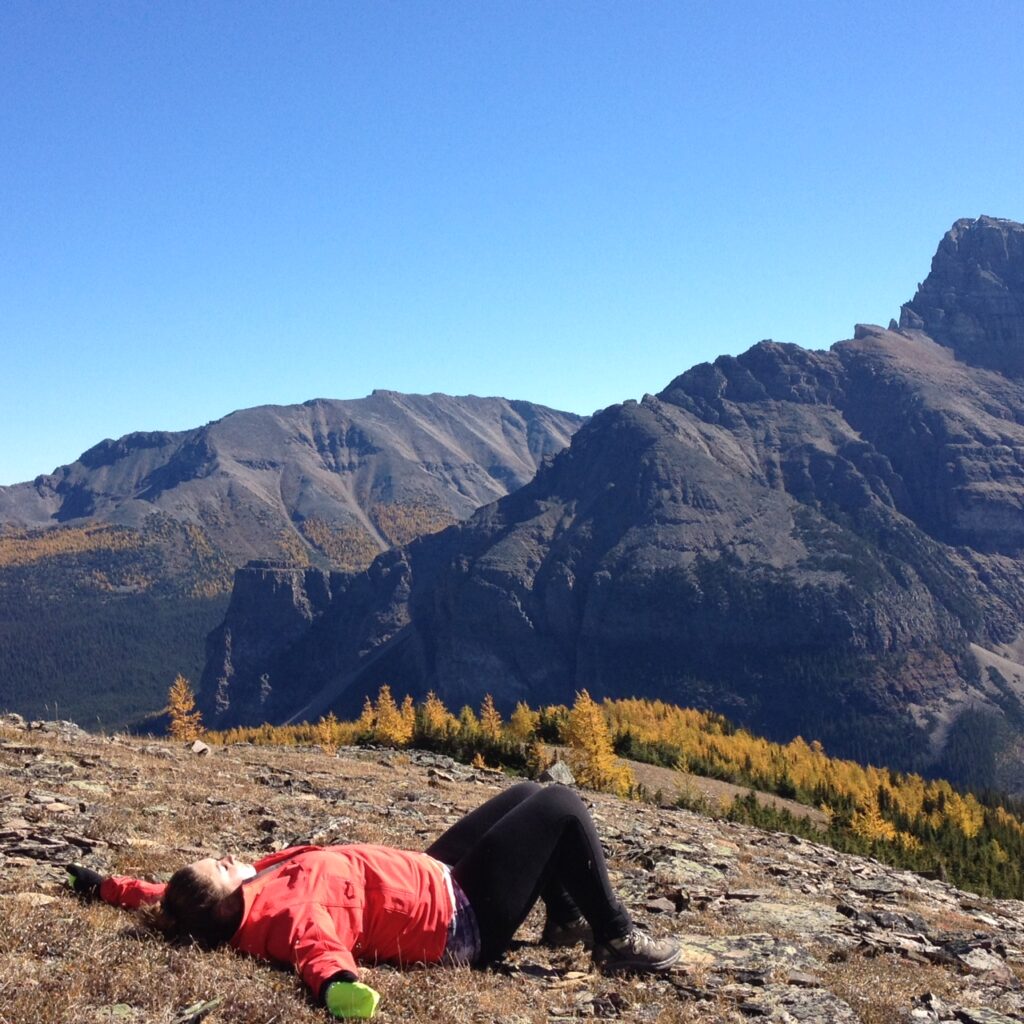
Building on the Japanese forest bathing foundation, health care researchers advanced a series of discoveries related to other biopsychosocial benefits of forest and nature connections. With the support of this scientific evidence, health care professionals, counsellors and guides have developed a broad practice that has come to be known as nature and forest therapy. Within the practice, participants are guided and supported in making safe and effective connections with forest and other natural environments to achieve mental, emotional, social and physical health benefits.

Partnership Case Studies
NFTC and Canada’s Forest Therapy Guides are actively partnering with many national, provincial and local organizations. Partnerships are the trees in the forest of NFTC’s desire and work to promote the health, well-being and relational benefits of connecting Canadians to nature. Through partnership, NFTC pursues the goals of:
BC Parks Foundation
NFTC partnered with the BC Parks Foundation to help them launch the PaRx program. PaRx is the country’s first national nature prescription program driven by health-care professionals who want to improve their patients’ health by connecting them to nature.
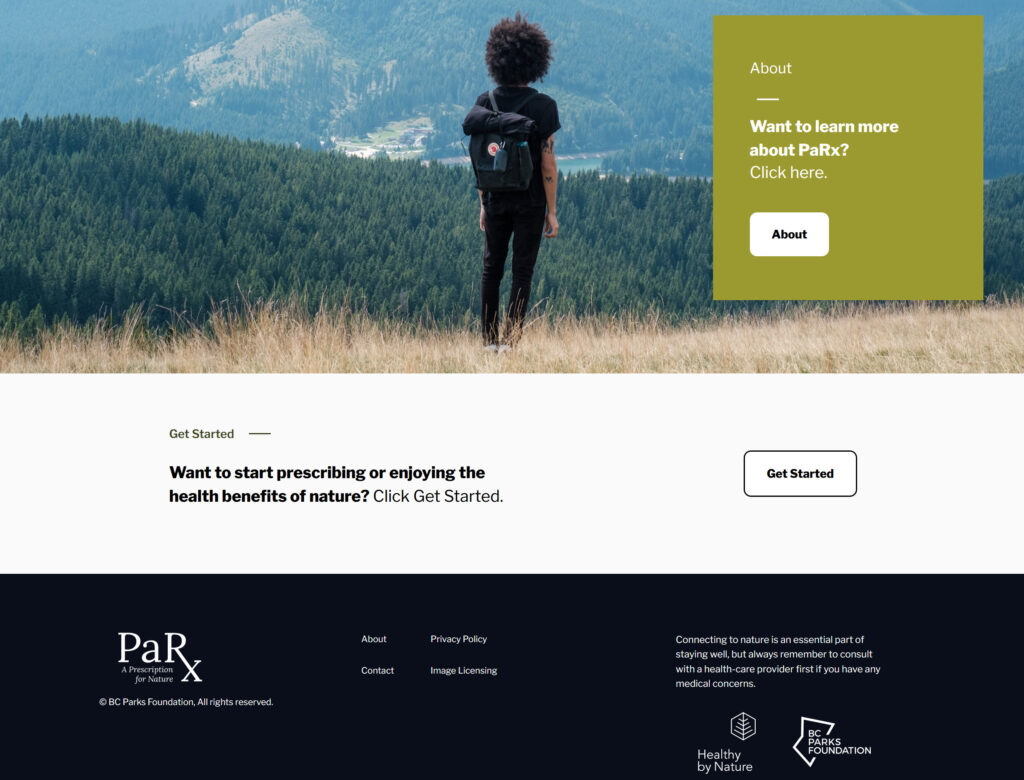
NFTC arranged and provided forest therapy experiences for doctors and nurses as well as media representatives and participated in media activity to support public awareness of the program.
Multidisciplinary Institute of Natural Therapy
MINT and NFTC have a strong partnership aimed at achieving MINT’s objectives to promote forest therapy and bridge the scientific gap between forest therapy activities and physiological and psychological impacts on human beings.
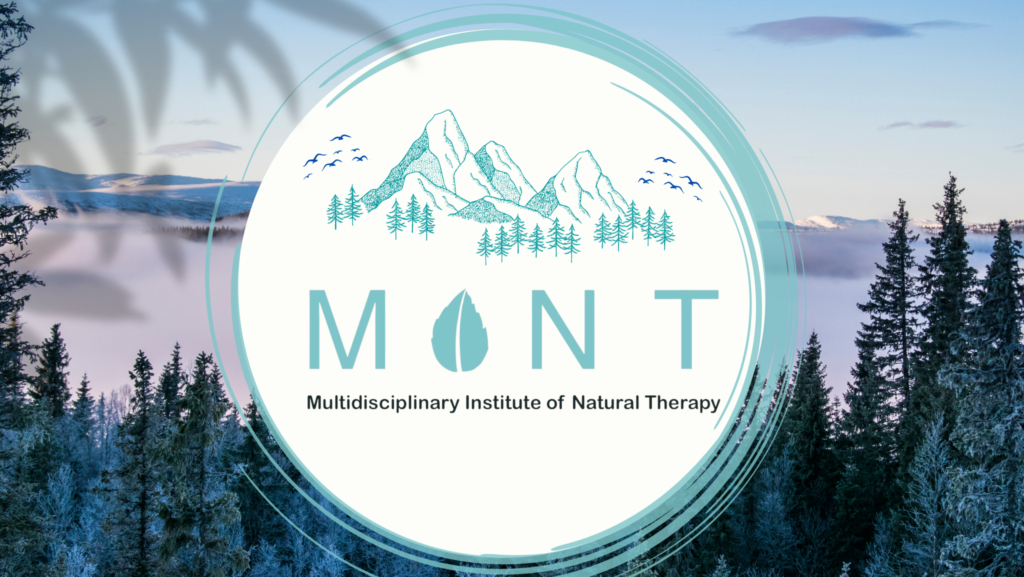
At the recent International Conference on Forest Therapy hosted by MINT, NFTC provide virtual forest therapy walks and NFTC board members Chris Goto-Jones and Ronna Schneberger both presented at the conference.

Why “Guided” Forest Therapy?
“The Forest is the Therapist. The Guide opens the Doors.”
– Amos Clifford, Association for Nature and Forest Therapy
It is possible to experience health benefits just by going for a walk in the woods. However, as with any unfamiliar experience, the benefits of a knowledgeable and experienced guide are extensive.

- Guides screen locations for accessibility and safety, alleviating participants of the burden of research and selection of safe and appropriate trails and areas.
- Guides are trained in providing participants with simple invitations to sensory experiences without triggering anxiety and in respect of the full and diverse range of human beliefs and values.
- Guides establish a space of openness, calm and a relaxed pace that enables participants to leave the pressures and intensity of modern life behind, overcoming isolation, disconnection and apathy through deeply authentic experiences.
- Guides facilitate unbiased, personal explorations for participants as individuals without imposing any particular agenda, reducing obstacles encountered by participants as they remember forgotten parts of themselves while following their unique paths to health benefits and wholeness.
- Guides provide opportunities for sharing among participants, adding to the wealth of experience and enhancing connections with nature as well as among participants, thereby promoting a sense of social belonging that is an important determinant of health.
“I don’t think people are seeking the meaning of life as much as
– Joseph Campbell
they are seeking the experience of being alive.”
Increasingly, the guided practice of forest therapy is supported by emerging research, including a recent study from December, 2021:
Forest Therapy Alone or with a Guide: Is There a Difference between Self-Guided Forest Therapy and Guided Forest Therapy Programs?
Jin-Gun Kim and Won-Sop Shin
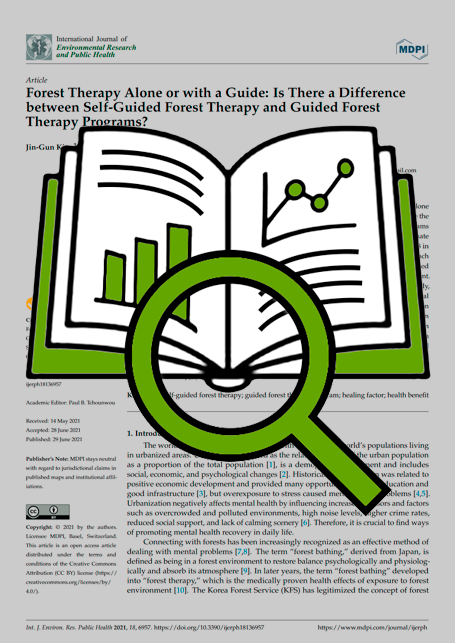
“There are generally two types of forest therapy. One is to walk or view the forest alone without a guide, and the other is to be accompanied by a guide. This study aimed to investigate the healing factors and health benefits of self-guided forest therapy and guided forest therapy programs and examine the differences in characteristics between interventions.”
“Thirty-seven undergraduate students participated in a randomized experiment (19 in the self-guided forest therapy and 18 in the guided forest therapy program). Among the typical differences, the self-guided forest therapy group mentioned more keywords related to introspection than the guided forest therapy program group. On the other hand, the guided forest therapy program group mentioned more keywords associated with the change of emotion and social interaction than the self-guided forest therapy.“

About NFTC
NFTC is a new, independent, non-profit organization (federally incorporated) born out of the Canadian Council of the Association for Nature and Forest Therapy (ANFT). Powered by volunteers, we exist to advocate for guided forest therapy and nature connection in Canada, to support research and the development of good practice, and to foster community and professional development among accredited guides practicing in Canada. We are actively building allies and working partnerships with like-minded people working in the fields of medicine, social services, wellness, education, parks and land management, and tourism across the country. We have a bright future with lots of activities planned for guides, allies and interested Canadians.
CONTACT US
For Information about Partnership
Training
Many NFTC guides are trained within the evidence-based ANFT program that was originally established in 2012. The Association of Nature and Forest Therapy Guides and Programs is the most experienced global leader in Forest Therapy Guide Training, and promoting the development and practice of Forest Therapy. ANFT Forest Therapy Guide Training draws on the latest medical research, new developments in the field of nature connection, and ancient traditions. To establish the knowledge and practice base of Forest Therapy Guiding, the rigourous 6 month, online, time zone based, instructor led training program comprises:
- live Zoom calls with trainers and fellow students
- a progression of modules that includes:
- research and theory articles
- videos including documentaries, media coverage and trainer presentations
- nature connection activities
- practical guiding exercises and assignments, including culminating projects
- a 4 day, in-person immersion, available in various locations around the world, minimizing the carbon impact of travel
Resources & Research
Since the early research in Japan, an increasing body of findings continues to grow as researchers around the world investigate the health benefits of forest therapy. Here are some of the most important findings to begin exploration of the evidence-based practice of nature and forest therapy.
The physiological and psychosocial effects of forest therapy: A systematic review
– Keeren Sundara Rajooa, Daljit Singh Karam, and Mohd Zaki Abdullaha
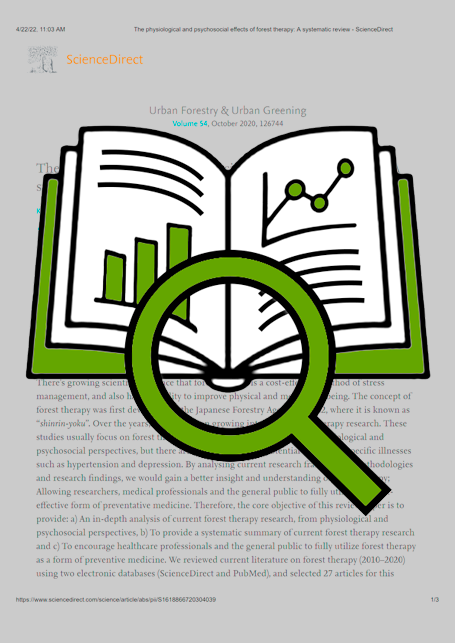
“Studies have found that urban environments have a negative impact on physical and mental health. … There’s growing scientific evidence that forest therapy is a cost-effective method of stress management, and also has the ability to improve physical and mental wellbeing. … We reviewed current literature on forest therapy (2010–2020) using two electronic databases (ScienceDirect and PubMed), and selected 27 articles for this review. Based on the research data, we believe that forest therapy plays an important role in preventive medicine and stress management for all age groups.”

Shinrin-Yoku (Forest Bathing) and Nature Therapy: A State-of-the-Art Review
– Margaret M. Hansen, Reo Jones, and Kirsten Tocchini
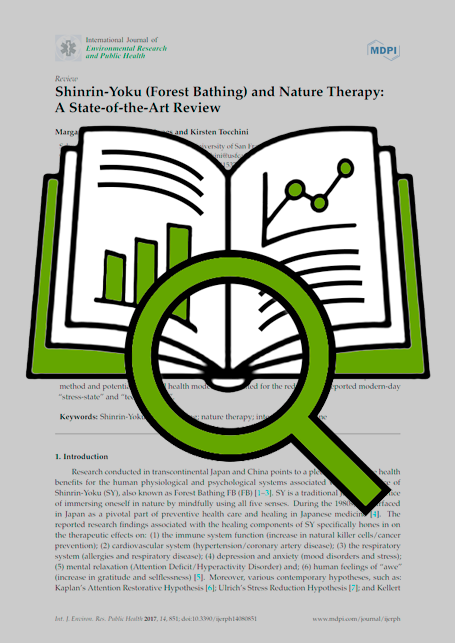
“Current literature supports the comprehensive health benefits of exposure to nature and green environments on human systems. The aim of this state-of-the-art review is to elucidate empirical research conducted on the physiological and psychological effects of Shinrin-Yoku (or Forest Bathing) in transcontinental Japan and China. Furthermore, we aim to encourage healthcare professionals to conduct longitudinal research in Western cultures regarding the clinically therapeutic effects of Shinrin-Yoku and, for healthcare providers/students to consider practicing Shinrin-Yoku to decrease undue stress and potential burnout.”

Nature–Based Interventions for Improving Health and Wellbeing: The Purpose, the People and the Outcomes
– Danielle F. Shanahan et. al.
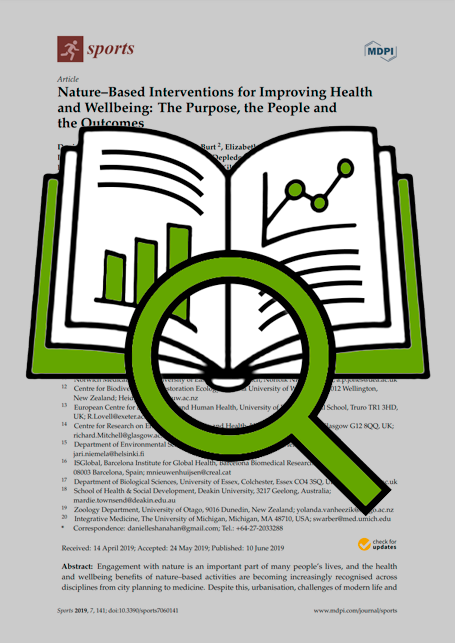
“Engagement with nature is an important part of many people’s lives, and the health and wellbeing benefits of nature–based activities are becoming increasingly recognised across disciplines from city planning to medicine. Despite this, urbanisation, challenges of modern life and environmental degradation are leading to a reduction in both the quantity and the quality of nature experiences. Nature–based health interventions (NBIs) can facilitate behavioural change through a somewhat structured promotion of nature–based experiences and, in doing so, promote improved physical, mental and social health and wellbeing.”